- Jun 22, 2014
- 52,030
- Pool Size
- 17888
- Surface
- Fiberglass
- Chlorine
- Salt Water Generator
- SWG Type
- CircuPool RJ-45 Plus
Of course, now that I got the filters changed there is a small amount of air leaking out of the pressure relief valve on the filter, and a small drip coming from where the lid meets bottom.
I took it apart a second time and lubed it again but will do it once more and see if that solves it.
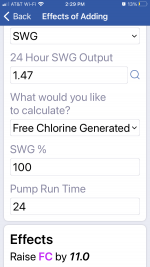
Got a picture of these spots? Something doesn’t sound right with that. You shouldn’t have to brush hard at all, but it doesn’t hurt as long as you aren’t taking plaster off.Thanks!
WFH helps the ability to keep up on it more than I normally would be able to!
I had a terrible dream last night.. I woke up to images in my head of there being a thick layer of black slime all over the pool!
This morning there was a new black spot on that same wall where most of the others have popped up. I think I need to rub a puck all over that wall as much as I can from the outside.
I still need to do that on the tile grout where I saw spots, too. I just scraped a couple of chunks off the tile grout and of course, some remnants of what I was scraping fell into the water and there was no way I could get it.
Why are new spots still showing up?? Is this stuff ever going to go away?
I have more CYA tester arriving tomorrow so I can verify if that's accurate. I know if it isn't then my chlorine SLAM levels would be off.
*Update:
I rubbed. Chlorine puck on some of the areas, including the tile grout where I've scraped chunks off of. (I went as far down the wall as I could reach down without dunking my head in).
Another new black spot on that same area popped up in the few hours between me doing that and checking the chlorine.
Obviously the algae isn't dying if it's still forming new spots.
I also switched back to the steel brush. I just don't think the nylon whale brush is going to cut it for this purpose, unfortunately.
Yes they're just like the attached. I scrubbed the new ones and now it's dark so I can't really get new pics yet.Got a picture of these spots? Something doesn’t sound right with that. You shouldn’t have to brush hard at all, but it doesn’t hurt as long as you aren’t taking plaster off.
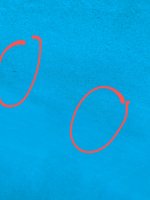
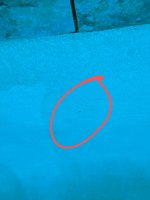
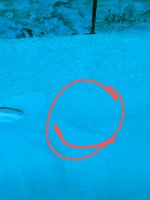
Those don’t look like any algae spots I’ve see but maybe someone else can comment.Yes they're just like the attached. I scrubbed the new ones and now it's dark so I can't really get new pics yet.
Interesting.Those don’t look like any algae spots I’ve see but maybe someone else can comment.
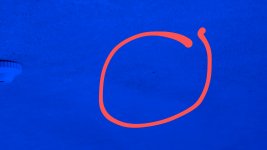
All the black algae I’ve had (the one timeInteresting.
They are much smaller there than they were because I had already scrubbed them.
I just took this photo.
That area is the dark spot I've seen, that has some black spots on it, I think... But could just be how it looks in the pic.
The other spots have formed around that general area, high up and down low on the wall.
2 new black spots showed up today.
Note: my phosphate level is 2500 ppb which probably hasn't helped me, especially leading leading up to this.
Is it possible I had/have black AND mustard algae?
I have had yellow colored algae on spots (small areas) that I've brushed off from the to time. I thought it was just run of the mill algae... Now I'm wondering if that's not the case.View attachment 461137
I honestly have no idea.All the black algae I’ve had (the one time
I did) was the size of quarter or larger. Are you sure it’s not some kind of staining?
If it’s only been 5 days, it’s not been very long. You can try the OCLT and see how that does now. Might give you a clue.I honestly have no idea.
I definitely had black algae on the tile grout, so I suspect it's algae starting on the plaster. Maybe I caught it before it got as big as yours?
I've had the chlorine at 20+ since Oct 31.
But I don't know. When I brush the spots they get a bit smaller but don't completely go away.. there is also a lot of other general discoloration/staining along those walls....
I need to figure this out because it's obviously not going away if the spots keep popping up. And I leave town the middle of next week. I'm scared to see what it will look like when I get back.
Does anyone else have any thoughts on this they may be able to lend?
With the water being colder, having the lower pH tells me my CSI is going to be high scaling potential. (High negative CSI)
My plaster already looks like Crud so I guess it's no biggie at this point.
I raised the TA (and keep it higher) to keep my CSI in range. I'll have to try and find the ideal combo of other chemicals with TA at the lower range. However, I am surprised to hear I should get my TA down as low as 60. At one point I had it at 70 and I was told to bump it, and in order to keep my CSI in good range it was difficult to with TA at the lower range but I will give that a shot. Having to add as much acid as I do will drop it relatively soon anyhow.

